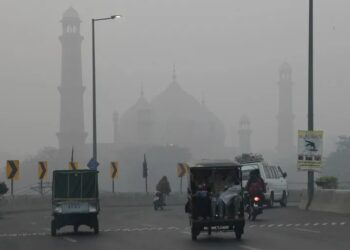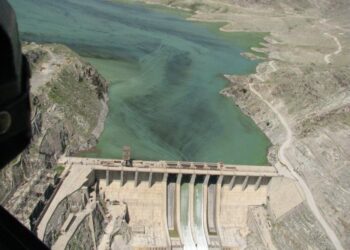Written by: Abdul Basit Alvi
The region of Jammu and Kashmir, a stunning area in the northernmost part of the Indian subcontinent, has been at the heart of one of the most prolonged and contentious conflicts in modern history. The situation in Indian-occupied Jammu and Kashmir (IIOJK) has resulted in widespread human suffering, with India’s military presence in the region leading to numerous human rights violations. For decades, the people of Kashmir have endured state violence, arbitrary detentions, and systemic oppression by Indian forces, drawing global condemnation and raising concerns about the fate of the region’s indigenous population.
The conflict in Jammu and Kashmir traces back to the 1947 partition of British India. Despite the majority of the population being Muslim and favoring union with Pakistan, the ruling Maharaja, Hari Singh, acceded to India under pressure, triggering violent clashes between India and Pakistan. Over the years, the region has witnessed several wars, insurgencies, and violent crackdowns. Despite numerous UN resolutions calling for a plebiscite to decide the region’s future, Jammu and Kashmir’s status remains unresolved, with India consistently denying Kashmiris the right to self-determination.
In August 2019, under the leadership of Prime Minister Narendra Modi, the Indian government revoked Jammu and Kashmir’s special autonomous status under Article 370 of the Indian Constitution. This move led to a total lockdown, severing communication lines, deploying thousands of troops, and detaining local political leaders, escalating ongoing human rights violations against the Kashmiri people.
The human rights abuses in IIOJK are widespread and include violations of international law and basic human dignity, committed by Indian security forces, including the military, paramilitary, and police. These forces operate with little oversight or accountability. One of the most disturbing aspects of the conflict is the widespread occurrence of extrajudicial killings. Human rights organizations such as Amnesty International, Human Rights Watch, and the United Nations have documented killings of unarmed civilians, including women and children, by Indian forces, often described as “encounters” where the victims are falsely labeled militants without independent verification or judicial inquiry.
Alongside extrajudicial killings, forced disappearances have plagued Kashmiri families for decades. Many families are left without answers, and numerous individuals remain missing. This has been described as a form of collective punishment that destabilizes Kashmiri society. Torture is another common violation, with detainees subjected to brutal physical and psychological abuse, including beatings, electrocution, suspension by limbs, and degrading practices. Many detainees are held incommunicado, denied legal representation, and subjected to indefinite detention without trial.
The international community, including human rights organizations, the United Nations, and various governments, has repeatedly condemned the human rights violations in IIOJK. However, despite these condemnations, India has largely dismissed calls for accountability, framing its actions in Kashmir as an internal matter and insisting that they are necessary for national security. Advocates for Kashmiri rights have called for international intervention to address the ongoing abuses and hold those responsible accountable. The United Nations has urged India to allow international human rights monitors into the region to assess the situation and investigate allegations of violations. The international community has also urged for the restoration of political freedoms and the safeguarding of the rights of the Kashmiri people, including their right to self-determination.
On the other side lies Azad Jammu & Kashmir (AJK), a region of great significance for Pakistan, both strategically and emotionally. Situated in the northern part of Pakistan, AJK borders Indian-occupied Jammu and Kashmir, giving it not only geopolitical importance but also deep cultural connections with the people of the Kashmir Valley. Over the years, Pakistan and the Pakistan Army have played a crucial role in the development, stability, and security of Azad Jammu & Kashmir (AJK), ensuring its resilience in the face of various challenges, including natural disasters, cross-border tensions, and internal development needs. Pakistan has consistently provided political, economic, and military support to AJK, safeguarding both its territorial integrity and the aspirations of the Kashmiri people. The Pakistan Army, in particular, has been instrumental in securing AJK’s defense, managing disaster relief, advancing infrastructure development, and promoting social welfare.
One of the most vital services provided by Pakistan and the Pakistan Army to AJK is in the area of security and defense. AJK shares a volatile border with Indian-occupied Kashmir, where tensions often flare up due to cross-border skirmishes, artillery exchanges, and the ongoing Kashmir conflict. The Pakistan Army plays a key role in securing the region from external threats, ensuring the safety of civilians, and maintaining peace along the Line of Control (LoC). The military presence in AJK also serves as a deterrent to potential aggression from India, reaffirming Pakistan’s commitment to defending the region. The Pakistan Army regularly conducts military operations and border patrols to monitor and neutralize threats. Additionally, the Army trains local security forces and civil defense teams, ensuring that AJK is well-prepared for any emergencies.
The Pakistan Army has also been central to providing humanitarian aid and disaster relief in AJK, particularly after natural disasters. The region is prone to seismic activity, and catastrophic earthquakes, like the 2005 earthquake, have caused widespread devastation, with tens of thousands of deaths and countless injuries. The Pakistan Army led relief efforts, mobilizing resources for search and rescue, providing medical aid, and distributing food and supplies to those in need. Beyond immediate relief, the Army played a vital role in long-term rehabilitation efforts, rebuilding homes, schools, and hospitals, and continuing to support infrastructure projects aimed at improving the region’s quality of life.
The Pakistan Army’s contributions to AJK’s development cannot be overstated. Understanding the importance of infrastructure in improving living standards, the Army has been actively involved in numerous construction and development projects. From building roads and bridges to constructing hospitals, the Army has been a key player in transforming AJK into a more accessible and developed region. Notably, the construction of the Murree Expressway, connecting Islamabad to Muzaffarabad (the capital of AJK), has been a major milestone. This highway has facilitated smoother transportation and strengthened economic ties between AJK and the rest of Pakistan. Additionally, the Army has played a pivotal role in developing hydroelectric power projects to address AJK’s frequent electricity shortages due to its mountainous terrain. The construction of schools, hospitals, and water supply systems in remote areas has also been integral to the Pakistan Army’s development efforts, significantly improving healthcare access, education, and overall living standards, especially in geographically isolated communities.
The Pakistan Army’s dedication to social welfare in AJK extends beyond physical infrastructure and disaster relief. Over the years, it has supported various programs aimed at improving the social and economic conditions of the region. These initiatives include agricultural development programs, vocational training centers, and healthcare services. The Army has established numerous schools across AJK, offering quality education to local children, particularly in remote and underserved communities. Additionally, the Army runs hospitals and medical camps, ensuring that even the most isolated areas receive essential healthcare services. The Pakistan Army also organizes skills development programs for the youth in AJK, equipping them with technical and vocational training that helps them secure employment across various sectors. These initiatives have contributed to improving living standards and reducing poverty in the region, enabling the people of AJK to actively engage in Pakistan’s broader socio-economic progress. While the Pakistan Army has led many efforts in AJK, civilian institutions have also been crucial to the region’s development. The federal government of Pakistan, in collaboration with the AJK government, has played a crucial role in implementing policies that support the military’s efforts to improve infrastructure, education, and healthcare in the region. This partnership between the Army and civilian institutions reflects a shared commitment to AJK’s prosperity and security.
Azad Jammu and Kashmir (AJK) stands as a symbol of development, resilience, and progress in a region often overshadowed by political tension and conflict. While the disputed area of Indian-occupied Jammu and Kashmir (IIOJK) remains a focal point of international attention due to its long-standing territorial dispute between India and Pakistan, AJK—administered by Pakistan—has become a notable success story in terms of economic growth, infrastructure development, and improvements in quality of life. AJK has outpaced many other regions in Pakistan in social and economic development and has shown marked improvements in human well-being compared to Indian-occupied Jammu and Kashmir (IIOJK).
A key factor in AJK’s development is its governance model. Operating under a unique semi-autonomous status with its own government, the Azad Jammu & Kashmir Legislative Assembly, the region enjoys a significant degree of self-governance while remaining administratively linked to Pakistan. The leadership in AJK has focused on improving living standards, with an emphasis on governance, public welfare, and sustainable development. This framework has allowed the region to prioritize its development needs and implement policies tailored to its specific challenges and opportunities. Furthermore, AJK’s strategic location—bordering Pakistan’s Khyber Pakhtunkhwa and Punjab provinces, and the volatile border with IIOJK—has ensured that it receives attention in national development plans and is closely integrated into Pakistan’s broader growth objectives.
AJK has made impressive progress in boosting its economy, often outperforming other regions in Pakistan in terms of key economic indicators such as growth rate, employment, and industrial development. Although geographically smaller than most of Pakistan’s provinces, AJK has punched above its weight in economic output, thanks to well-coordinated efforts from both the regional government and federal support. AJK’s agricultural sector has seen significant growth, benefiting from fertile soil, a favorable climate, and abundant water resources from its rivers and streams, many of which originate in the Himalayas. The region produces a range of crops, including fruits such as apples, peaches, and apricots, as well as grains and vegetables. These agricultural products sustain local communities and are sold in both domestic and international markets, contributing to AJK’s expanding economy. Livestock farming is also a key economic activity, with many households relying on it for their livelihood. The region’s focus on improving agricultural practices through modern techniques and research has further fueled growth in this sector.
One of the most remarkable aspects of AJK’s development is its infrastructure. In recent decades, the region has undergone a significant transformation, particularly in terms of roads, bridges, and energy projects. The construction of roads linking AJK to major cities in Pakistan and the development of rural infrastructure have not only improved accessibility but also created new economic opportunities, particularly in tourism and agriculture. Hydroelectric power generation is another area where AJK has outperformed much of Pakistan, further strengthening its economic growth. The region is home to several major dams and power plants, including the Mangla Dam, one of Pakistan’s largest and a key source of electricity. AJK’s focus on harnessing its natural resources for sustainable energy production has not only met its own power needs but also contributed to addressing Pakistan’s national energy crisis, benefiting the country as a whole.
Education has been a cornerstone of development in AJK for many years. The region has made substantial investments in both primary and higher education, understanding that human capital is essential for long-term growth. AJK’s education system is highly regarded in Pakistan, with literacy rates exceeding the national average. This achievement is the result of both government initiatives and the active involvement of local communities in promoting education. Significant progress has been made at the primary and secondary levels, thanks to the government’s commitment to building new schools, improving existing ones, and ensuring that all children have access to quality education. The schools in the region are equipped with improved facilities, more qualified teachers, and a curriculum that meets the latest educational standards. Higher education in AJK has also made remarkable strides. The region is home to several well-established universities and technical institutes, such as the University of Azad Jammu & Kashmir, which offers a broad array of academic programs and plays a crucial role in producing a highly skilled workforce. Additionally, AJK hosts vocational training centers that provide young people with the skills needed to succeed in various industries, including agriculture, construction, and technology. The focus on education has helped alleviate poverty and unemployment, empowering local youth and providing them with the tools to contribute to both regional and national development.
The healthcare sector in AJK has experienced a significant transformation in recent years, with notable improvements in infrastructure, services, and access to care. The region’s healthcare system is built on strong government initiatives and support from the Pakistan Army, which has provided essential medical assistance during natural disasters and in remote areas. Healthcare facilities in AJK have greatly improved, ranging from district hospitals to health centers in rural areas. These facilities are equipped with modern medical technology and staffed by qualified professionals. The government has also worked to improve access to medical services by building hospitals in underserved regions, ensuring that even the most remote areas receive timely, high-quality care. Public health programs in AJK have focused on maternal health, vaccinations, sanitation, and awareness of lifestyle diseases. These initiatives have played a significant role in improving life expectancy, reducing infant mortality rates, and enhancing overall public health standards.
AJK has consistently prioritized enhancing the quality of life for its residents. The region’s commitment to poverty alleviation, social welfare, and community development programs has led to a substantial reduction in poverty and improvements in living conditions. With support from Pakistan, the AJK government has implemented targeted poverty reduction programs for rural communities and marginalized populations, including microfinance, skill development, and rural infrastructure projects. Access to clean drinking water, sanitation, and electricity in rural areas has greatly improved, contributing to a higher standard of living.
Tourism is another area where AJK has experienced growth. The region’s stunning natural landscapes, including mountains, rivers, and forests, have made it an increasingly popular tourist destination. Tourism has not only boosted the local economy but also created job opportunities in hospitality, guiding, and transportation. When comparing AJK to Indian-occupied Jammu and Kashmir (IIOJK), the contrasts in growth, development, and quality of life are clear. AJK has experienced greater political stability, a stronger focus on development, and a higher standard of living compared to IIOJK, where political unrest, limitations on autonomy, and economic challenges have been significant issues. While IIOJK has dealt with political instability, security concerns, and slow economic progress due to the ongoing conflict and Indian policies, AJK has thrived under relatively stable governance, benefiting from Pakistan’s support for its socio-economic initiatives. The contrast between AJK and IIOJK is striking, especially in areas like infrastructure, education, healthcare, and overall quality of life, with AJK consistently surpassing its neighbor in various key metrics.
Some segments of Indian media, the Indian establishment, and anti-state elements in Pakistan claim that governance in IIOJK exceeds that of Azad Jammu and Kashmir (AJK). They promote the misleading notion that residents of IIOJK have better facilities and greater happiness than those in AJK. However, an unbiased comparison of governance and developmental achievements in both regions reveals significant disparities, with AJK demonstrating strong governance, while IIOJK faces numerous challenges.
AJK has prospered under a stable political environment marked by smooth power transitions and a functional democratic framework. This stability has allowed the government to prioritize development initiatives and welfare programs. AJK’s economy has steadily grown, driven by investments in hydroelectric power, infrastructure, tourism, and agriculture. The region has made substantial progress in healthcare, education, and social services, leading to higher human development indicators, including life expectancy, literacy rates, and per capita income, compared to IIOJK. In contrast, IIOJK has been plagued by political instability, frequent administrative changes, and strained relations with the Indian central government. The region has endured widespread human rights violations, including restrictions on freedom of expression, assembly, and movement, especially following the abrogation of Article 370. The situation has worsened with escalating violence by Indian authorities and armed forces against civilians. The economy of IIOJK has suffered from a lack of investment, limited job opportunities, and a decline in tourism, while social unrest persists, marked by frequent protests and harsh tactics by security forces.
Additionally, claims about the affordability of basic necessities like electricity and flour in IIOJK compared to AJK are completely false. For instance, in AJK, the cost of 40 kg of flour is 2000 PKR, whereas in IIOJK, the same quantity costs 4670 Rupees. Electricity tariffs also reflect this disparity: residential rates in AJK are 3 PKR, compared to 18 Rupee in IIOJK, while commercial rates are 10 PKR in AJK and 49 Rupee in IIOJK. These differences underscore the contrasting approaches taken by the respective governments. AJK prioritizes development, stability, and the well-being of its residents, while IIOJK struggles with political instability, human rights violations, and economic stagnation.
The federal government of Pakistan has also initiated the Danish schools in AJK, which are expected to revolutionize the education sector. The student-teacher ratio in AJK is significantly better than in both Pakistan and IIOJK, where 1 teacher is responsible for 31,000 students across 1330 schools. Meanwhile, in IIOJK, Indian troops have committed numerous atrocities since 1989, with the infamous Gaw Kadal massacre in 1990, where over 50 civilians were killed. Over the past 36 years, 96,388 Kashmiris have been killed by Indian forces in IIOJK. In stark contrast, the people of AJK enjoy their lives with freedoms and liberties.
In IIOJK, media is heavily restricted, while in AJK, the media is free. Forced disappearances are routine in IIOJK, with estimates from the Association of Parents of Disappeared Persons (APDP) indicating that 8,000 to 10,000 Kashmiris have gone missing since 1989. On key indicators, AJK clearly outpaces IIOJK and even Pakistan in several areas, providing a stark contrast between the two regions. AJK, with a population of 4.45 million and a population density of 300/km², showcases effective planning and demographic stability, in contrast to IIOJK, which has a lower density of 245/km² and a growth rate of just 2.63%. AJK’s road network covers 8,865 km, with a density of 0.66 km/km², surpassing IIOJK’s 0.52 km/km² and Pakistan’s national average of 0.32 km/km². The 13th Amendment (2018) granted AJK greater legislative and financial autonomy, enhancing its self-governance. With a literacy rate of 76.8%, AJK outperforms Pakistan (62.3%) and IIOJK (67%). Meanwhile, 800 schools in IIOJK report zero enrollment, highlighting significant administrative shortcomings. AJK benefits from initiatives such as the Rs. 750 million AJ&K Education Endowment Fund and a 2% higher education quota in Pakistan, which enhance educational opportunities. The region’s healthcare system is supported by a doctor-to-patient ratio of 1:2315, which is better than IIOJK’s 1:2660. AJK also has eight hospitals, 275 Basic Health Units, and 12,542 medical professionals. The poverty rate in AJK is 22%, significantly lower than IIOJK’s 49%, and 30% of AJK’s population holds government jobs, compared to only 3.8% in IIOJK. AJK enjoys 100% telecom coverage and over 90% satisfaction with 3G/4G services, ensuring strong connectivity and fostering economic growth. Rich in natural resources like rubies, sapphires, marble, and graphite, AJK has significant untapped potential, unlike IIOJK, where political instability has hampered resource utilization. AJK operates under democratic governance that guarantees freedoms of speech, assembly, and religion, in stark contrast to the repression in IIOJK following the 2019 revocation of autonomy. Since 2019, 859 Kashmiris have been killed, and Genocide Watch has warned of potential atrocities in IIOJK, where media freedoms remain severely restricted.
AJK’s achievements reflect Pakistan’s commitment to inclusive governance and sustainable development, offering a clear contrast to the challenges faced by IIOJK under Indian policies. This comparison highlights that Pakistan, with the support of its Army and the AJK government, is fulfilling its responsibilities far more effectively than India is in IIOJK. The people of AJK must also acknowledge and fulfill their responsibilities. While AJK lacks significant industries or agricultural output and relies on Pakistan for resources, it is important to recognize the contributions of provinces like Punjab and Sindh, which have thriving industries and agricultural sectors, significantly contributing to government revenue without seeking subsidies. AJK’s contribution to tax generation and revenue is minimal. When it comes to utilities such as electricity, it is essential to consider the complexities involved in providing them, including the costs of equipment, manpower, maintenance, and operation. Similarly, commodity pricing, such as flour, must factor in all associated costs. It is vital to approach demands with a realistic and logical mindset, considering all aspects of the situation. The state is diligently fulfilling its duties, and now it is up to the people to do the same. Rather than focusing on personal gains, individuals should adopt a positive outlook and actively contribute to the welfare and progress of the entire country and state.
The people of AJK are well aware of the facts and strongly reject the propaganda spread by enemies and anti-state elements to foster hate against Pakistan and its military. Kashmiris have deep love for Pakistan and its Army, and no force can break the bond of love between Pakistan and Kashmir.

























